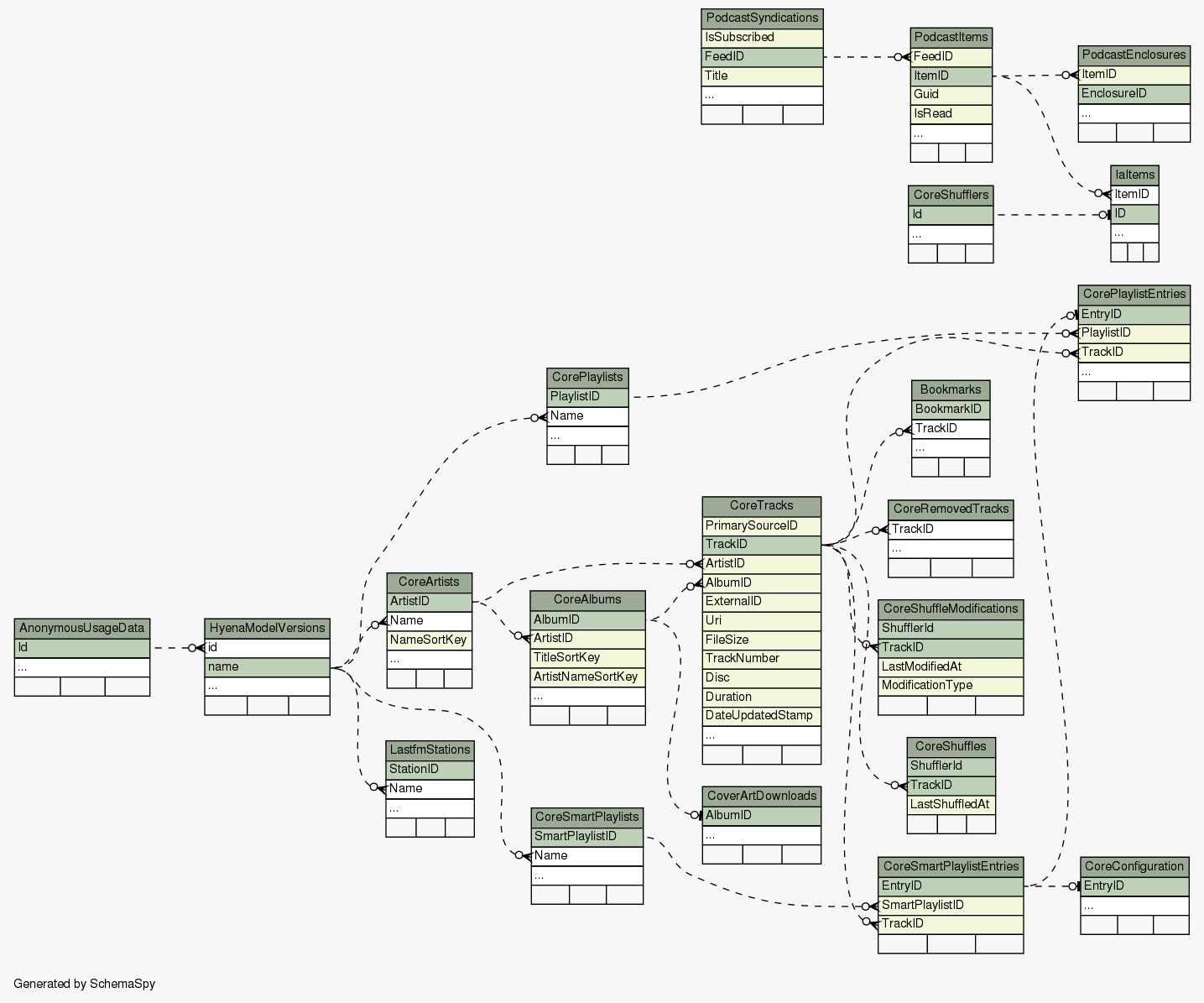A little over a year ago, I shared a neat technique to generate DB diagrams for databases, with a focus on SQLite. At the time, SchemaSpy had much better output but didn't have a good SQLite driver. Well, a recent commenter asked if it was possible, and fortunately, that's recently changed. It's not as easy as possible but it's at least more possible than before.
Prep
First, you'll need some compilers. Easy on Ubuntu: apt-get install openjdk-6-jdk gcc.
Second you'll need to download development headers for SQLite. Again, on Ubuntu apt-get install libsqlite3-dev.
Next, download the javasqlite.tar.gz from Christian Werner. This package, when built, will provide a a Java native interface to access SQLite databases with. It's a straight forward build assuming you've got all the dependencies. I'm not clear on where to install this so java finds it or how to best set up env vars to where SchemaSpy needs less help; I'm sure it's possible though.
Finally, download the latest SchemaSpy jar.
Usage
The invocation is a little bit confusing. LD_LIBRARY_PATH seems required for the JNI to work. The -dp is required for SchemaSpy to find the drivers. There's probably a directory it could be installed to instead. -nowrows turns off row counts, and -hq turns on high quality Graphviz output. I used the following command line to diagram Banshee's database (YMMV):
LD_LIBRARY_PATH=/usr/local/lib java -jar ~/tmp/schemaSpy_5.0.0.jar -t sqlite -db ~/.config/banshee-1/banshee.db -o banshee -sso -dp ~/src/javasqlite-20110106/sqlite.jar -hq -norows
The diagram output:
There's more to the output than just a diagram, like a clickmap to browse individual table definitions, and warnings about "Columns that are flagged as both 'nullable' and 'must be unique'".
Issues
The SQLite driver isn't perfectly matched, and there's a number of warnings generated. Firstly, there's rarely any documented key constraints, so SchemaSpy has to infer relationships based on field and table names, and does so poorly at times. Secondly, it fails to collect row counts, and gives you -1 instead if you ask it to try. Finally, it fails to determine autoincrement status. Really, we should be thankful it works as well as it does, given the SQLite design philosophy.
Well, hopefully you'll find a lot of opaque embedded databases just got a bit easier to comprehend!

Comments !